Don't wanna be here? Send us removal request.
Text
Top 10 Historic Houses in Canada
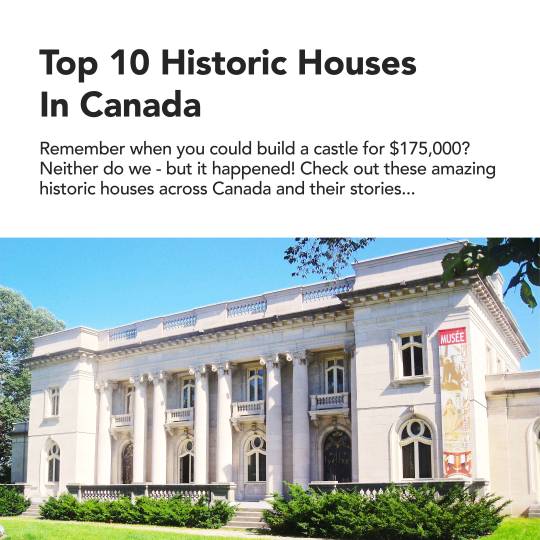
When visiting another country, it's always nice to see some of the historic and beautiful places it has to offer. You should take time to visit these places not only to appreciate the country even more, but also to learn more about it. And there are no other places more historic or more colorful than houses in which history happened.
10 Historic Houses In Canada
Canada is one of the most historic and colorful countries in the world. Everywhere you go, you'll find a place worth visiting. However, there are some places that are more worth visiting than others. Here are some of the houses that you should take time to visit:
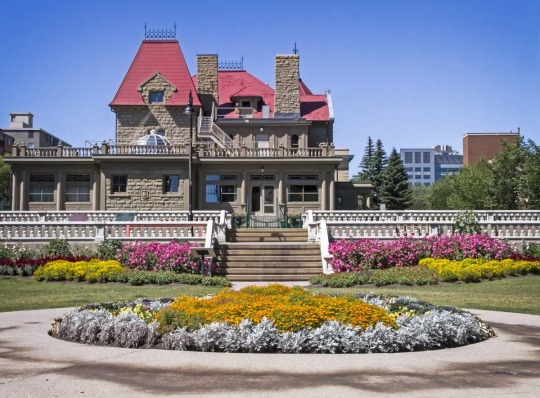
1. Lougheed House
This place was first known as "Beaulieu", which means "beautiful place" in French. It's in Calgary, Alberta's Beltline district, and is a national historic site.
The Lougheed House Conservation Society are the ones who manage the place. It is a non-profit and an independent society that devotes itself to restoring the house and allowing the public to enjoy it.
Senator James Alexander Lougheed built the mansion back in 1891, for his wife Isabella Hardisty Lougheed. Together with their first two sons, Clarence and Norman, they moved into the house. After their move, they had four more children: Edgar, Dorothy, Douglas, and Marjorie.
The family expanded the house in 1907, in order to accommodate their growing family, as well as their increasing amount of acquaintances and friends. They made the house according to the municipal building code, because of the Calgary Fire in 1886.
For the most part, the Lougheed House was a residential place, a military barracks for women, blood donor clinic, and a women's training centre. However, preceding the year 2000, the house was empty, yet cared for. On that year, however, new restoration of the house began.

2. Henry House
The house can be found on Halifax Regional Municipality's Barrington Street. It's a two-and-a-half-storey property, and has been appointed as a National Historic Site of Canada. Under the Heritage Property Act of the province of Nova Scotia, the property is a Municipal Registered Property and a Provincially Registered Property.
Henry House was originally built for John Metzler back in 1834. He was a wealthy landowner and Halifax stonemason. The property is originally known as a house associated with William Alexander Henry, a native of Halifax who stayed with the Metzler family from 1854-1864.
Henry was very prominent back in the day, because he was a Father of Confederation. He was also the co-author of the British North America Act, a Mayor of Halifax, a provincial Attorney General, and a Member of the Nova Scotia House of Assembly. Henry served as Supreme Court of Canada's justice, and was the first Nova Scotian to ever do so.
During the late 19th and early 20th Centuries, the property was a Sailors' Home. The Navy League of Canada operated the property during that period.
Jacques Ducau and Richard (Dick) Raymond bought the property back in 1968. In 1969, the duo renovated the property, opening a restaurant and downstairs tavern inside. Little Stone Jug was the tavern, and the restaurant was deemed The Henry House.
The restaurant is still in operation today, but is now known as The Henry House Restaurant & Pub. In 1969, the property was appointed a National Historic Site.

3. Earnscliffe
The Victorian manor that was built in the style of the Gothic Revival can be found in Ottawa, Ontario. It was the house of Sir John A. Macdonald, the first Prime Minister of Canada. However, since 1930, it has become the house of Canada's British High Commissioner.
The company of Thomas McKay were the ones who built the property. It was built in 1855 for John McKinnon, McKay's son-in-law. In 1866, however, McKinnon suddenly died, and Thomas Keefer, McKay's other son-in-law, bought the property.
After two years, Keefer sold the property to a railroad developer, Thomas Reynolds. He stayed in the property for a couple of years. During his stay, the property got the name "Earnscliffe", which means "eagle's cliff".
In 1879, Reynolds died, and in 1883, Sir John A. Macdonald bought the property from Reynolds's son. During an earlier time, Macdonald had stayed with Reynolds. According to rumors, Macdonald was the one who gave the property its name. Macdonald made renovations to the property, and even added several rooms in 1888. He got sick and died on the property in 1891.
His widow, Lady Macdonald, briefly continued to reside in the home after his death, and Queen Victoria made her Baroness Macdonald of Earnscliffe. Soon, however, Lady Macdonald and her daughter departed for England, and leased the house to Lord Treowen, commander of the militia. Over the next decades, the building was home to several local notables, including Mrs. Charles A.E. Harriss.
Afterwards, William Henry Clark, Canada's first British High Commissioner, bought the house in 1930. And ever since, the property has been the British High Commissioner's house.

4. Dundurn Castle
If you're stopping by Hamilton, Ontario, Canada, then Dundun Castle is a must-stop. It's an 18,000 sq.ft. historic neoclassical mansion. The house cost $175,000 to build, and was finished in 1835. At the time, though, the house had the latest conveniences - such as running water and gas lighting!
The City of Hamilton is now the owner of the property, who purchased it for $50,000 in 1899. In order to make the property open to the public, the City has renovated it for almost $3 million. All of the rooms have been restored to how they looked back in 1855, when Sir Allan Napier MacNab owned it. Costumed interpreters are there to guide those who visit the house. A descendant of Sir Allan MacNab, the Duchess of Cornwall, is the Dundun Castle's Royal Patron.
Robert Charles Wetherell was the architect who built the house, completing it in 1835. Richard Beasley was the original owner of the house - however, due to financial problems, he was forced to sell it. He was one of the early settlers of Hamilton. MacNab built the house's foundation on the brick home of Beasley.
Once the house was finished, it became known for its grand entertainments all over Canada. King Edward VII and Sir John A. MacDonald are just a few of the people who have been to this historic house.
When MacNab died, the property became an institution for deaf mutes. In 1872, Donald McInnes bought the property. Later on, he would sell the property to the City of Hamilton. It was renovated, restored and appointed as a National Site of Canada.

5. Sir George Etienne Cartier House Museum
Another of Canada's National Historic Sites is the house of Sir George-Étienne Cartier. The place is now a historic house museum, commemorating Cartier's life and accomplishments. Nowadays, the house also has other adjoining houses, which features the architectural heritage of 19th-Century Montreal’s middle class.
The house is made up of adjacent houses: the 'west house' and the 'east house'. These houses were separate at first, but now they form one building. The 'west house' portrays the Cartier family's way of life during the 1960s, and an exhibit can be found on the 'east house' which showcases the life of Sir George-Étienne Cartier. Sir George-Étienne Cartier was a prominent man of his time, as a politician and a middle-class Montrealer.
Sir George-Étienne Cartier House showcases the work and career of one of the Fathers of Confederation. It's also a great example of a neoclassical building that went through modifications.
The house museum can be found on the northeast edge of the Old Montreal district. It was appointed as a Canadian National Historic Site in 1964. The house was recognized because of the architectural importance and historical value.

6. Park House Museum
When you go to Amherstburg, Ontario, Canada, then you should go to Park House Museum, a historic house museum that was built in Detroit in 1796. However, in 1799, it was moved to Amherstburg.
The house has had plenty of owners, but only the Park Family is widely-recognized. The Park Family lived in this house for 102 years.
The Rotary Club of Amherstburg would buy the property in 1972. It was renovated, and became a local history museum, portraying how it was in the 1850s.
Park House Museum was built by a British loyalist near the Rouge River in 1796. The owner went to Malden when the American Revolution was over. Two years later, in 1798, it was disassembled and moved, with the help of a canoe. The property was built back up again in Amherstburg on the 17th Lot, Dalhousie St., and it would stay there for the next 173 years.
Through a draw, the lot was awarded and given to Leigh, Duff, and Shepherd. Captain Hector McLean, Fort Malden's Commanding officer, chose to give it to Nancy, a schooner, instead. Nancy's owner held the property.
In 1817, the property was bought by Alexander Mackintosh. Soon after, however, in 1823, Jean Baptists Macon bought the property. Macon, who was a famous merchant, hired the Park brothers as clerks - and in 1839, Thomas F. Park bought the house. He lent it to Theodore Jones Park, Thomas's younger brother.
After Theodore Jones Park died, John R. Park, his younger brother, bought the property. The son of Theodore, Dr. Theodore James Park, lived in the house after that. And when he died, Lizzie, his sister, owned the property.
The property changed hands multiple times afterwards. Nowadays, though, it's educating everyone about day-to-day living in the 1850s. The Park House Museum was appointed as a National Historic Site on October 4, 2018.

7. McCrae House
One of Canada's Historic Sites is the McCrae House. It can be found in the birthplace of John McCrae in Guelph, Ontario. John McCrae is a soldier, doctor, and the author of "In Flanders Fields".
McCrae House is a small limestone cottage that is owned by the McCrae family. It was first built in 1858, and the McCrae family stayed there from 1870 until 1873. The property changed hands multiple times, until a group of Guelph citizens bought it in 1966. They created the Lt. Col. John McCrae Birthplace Society, and raised money to restore the house.
Every year, the house offers a different theme. It has temporary and permanent exhibition spaces, which showcase the life of John McCrae. The house was appointed as a place of national significance by the Historic Sites and Monuments Board. John McCrae was also appointed as a person of national significance.
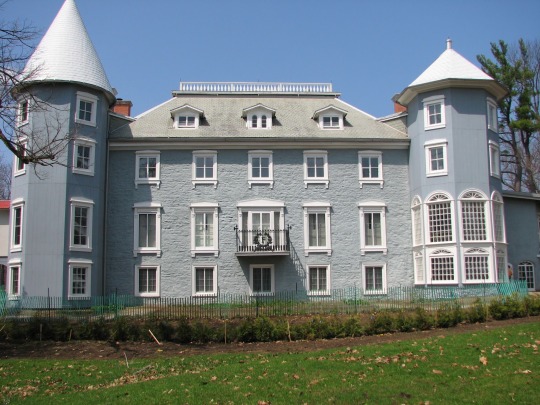
8. Manoir Papineau
The Papineau family stayed in the Manoir Papineau from 1850 to 1929. Manoir Papineau is now being operated by Parks Canada. In 1993, Parks Canada were appointed as its custodians, and they opened it to the public.
Manoir Papineau is considered to be one of the Ottawa River region's most important heritage locations. The property was built to remember Louis-Joseph Papineau, who was one of the leading politicians of the 19th Century, and was the first leader of the French-Canadian nationalists. Later on, he became La Petite-Nation's first seigneur.
The house was built when Papineau came back to Canada, after he had been exiled to Europe. And he and his family lived here, in the house, until he died. Generations of his family continued to live in the house until the 1920s.
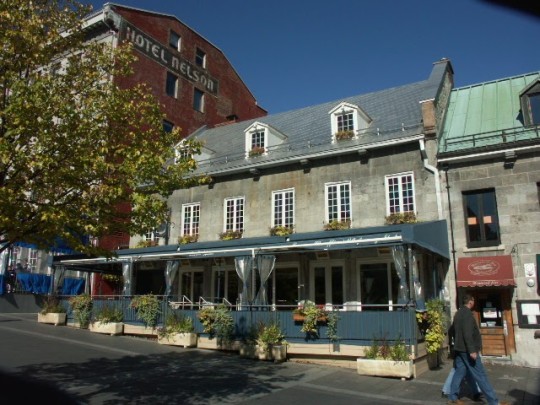
9. Maison Cartier
One of the most historic houses in Montreal is Maison Cartier. In Old Montreal, you can find the Maison Cartier, which is also appointed as a Canadian National Historic Site. It was appointed as a National Historic Site back on November 19, 1982.
The Maison Cartier was built from 1812 to 1813. Amiable Amiot dit Villeneuve, a mason, and Antoine Bouteiller, a carpenter, constructed the house. The walls and the dormers on the roof are made of ashlar. They are great examples of the 19th Century's urban architecture of Quebec. Augustin Perrault and Louis Parthenais were the first owners of the Maison Cartier.
Maison Cartier can be found in one of the most colorful areas in Montreal, The Village. Its interior design is heavily inspired from Art Deco's style and elegance. Each room has its own terrace or balcony, allowing you to enjoy the view of the city. If you want to enjoy Montreal, then you should definitely visit Maison Cartier.
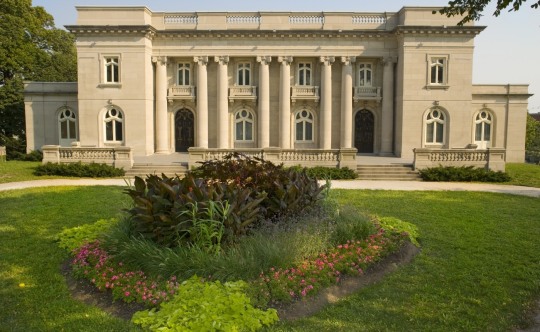
10. Château Dufresne
One of the most historic places in Canada is Château Dufresne, a historic house in Mercier-Hochelaga-Maisonneuve's borough. Oscar Dufresne and Marius Dufresne, two French-Canadian entrepreneurs who had huge involvements in the Maisonneuve's history, stayed at this house for a time.
Originally, the place was parted into two different houses - one for each Dufresne. The Dufresne family would later sell the property to the Congregation of the Holy Cross, who would use it as the Holy Cross College's pavilion annex.
In 1957, the City of Montreal became the new owner of the property. However, until 1961, Holy Cross College stayed as a tenant. Then, from 1965 to 1968, the Montreal Museum of Contemporary Art was the tenant. From 1976 to 1997, the mansion's tenant was the Montreal Museum of Decorative Arts. And the Château Dufresne Museum has been staying in the property from 1999 up until now. In 2014, the property was renamed “Dufresne-Nincheri Museum”.
Marius Dufresne and Jules Renard designed the property in the style of the Beaux-Arts. It was appointed as a historic monument by the provincial government in 1976.
Worth The Visit
Each of the houses on this list is worth the visit. You will not only get to experience the history of Canada, but you will also be able to enjoy the view! If you're planning to learn history, or to simply enjoy a trip or two, then why don't you hop in your car and drive out to visit!
#canadahouse, #realestateproperty, #propertyforsaleincanada, #canadahouseforsale, #canadahouseforrent, #canadahouseprice, #canadahouseandhome, #rentahousecanada, #canadahousecost, #canadahousedebt, #houseforsalecanada, #cheaphousesforsaleincanada, #homesforsaleincanada, #canadaapartmentforsale, #propertyforsaletoronto, #tinyforsalecanada, #luxuryhomesforsaletoronto, #canadapropertyprices, #historichousesincanada, #iconichousesincanada, #mostexpensivehousesincanada, #cheappropertiesforsaleincanada
https://www.greaterpropertygroup.com/gpg-blog/Top-10-Historic-Houses-in-Canada
https://www.greaterpropertygroup.com/
#Canada house#real estate property#property for sale in Canada#property for sale Toronto#Canada house for sale#Canada house for rent#Canada house price#homes for sale in Canada#luxury homes for sale Toronto#cheap houses for sale in Canada#most expensive houses in Canada#iconic houses in Canada#historic houses in Canada
0 notes
Text
The 5 Best Places To Retire In Canada
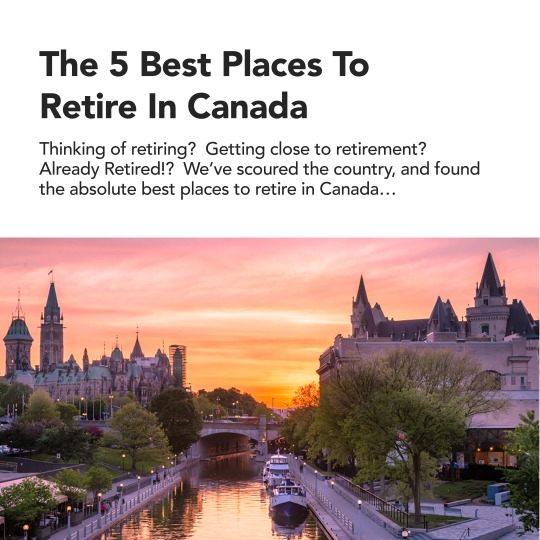
When you reach a certain age, you realize that your life has changed a lot. You may have bought your family house 10 years ago, 20 years ago, or even 30 years ago. Your kids may have moved out now, and have lives of their own. Prices have changed, music has changed, fashion has changed, everything has changed. And this may be the reason why, since you’re already getting older, you may also want to change your environment.
And now that you’ve decided you want a change in scenery, it’s time to decide where! You may have already spent some time looking at real estate prices, crime rates, climate data, or statistics and figures. Those numbers may help you decide, but let’s be honest: these figures never really give you the whole picture.
So, what should you do? Well, here at Greater Property Group, we’ve scoured the country, and found the absolute best places to retire in Canada.

1. Ottawa, Ontario
The city of Ottawa is known as the heart of Canada’s capital region, Ontario. Ottawa has a population of 934,243, and has a vibrant lifestyle. Every year, since 1952, the city celebrates the Canadian Tulip Festival.
For obvious reasons, the city of Ottawa is a fantastic retirees’ destination. Ottawa is one of the best places to settle in, and offers a great mix of attractions and conveniences. The two rivers that flow through Ottawa are lined with greenspace and parkland. There are plenty of galleries and museums for you to enjoy. You can go to the National Gallery of Canada, Canadian Museum of History, Canada Science and Technology Museum, Canada Aviation and Space Museum, and Canada Agriculture and Food Museum.
Financial-wise, in 2016, the city was ranked top 1 by MoneySense in their list of the Best Places To Live. The next year, the city ranked top 2. Ottawa is especially noted for their great access to health care, a collection of cultural activities, and their active real estate market.
If you don’t want to live in the city, you can also live in the smaller communities nearby. These communities are definitely worth considering, and some of them even offer great real estate values. There are plenty of houses here that are modern, with a touch of small town charm. You can visit Manotick, Stittsville, and Carleton Place, if you want to be near the capital, yet still be able to enjoy country living.

2. West Vancouver, British Columbia
The city of West Vancouver is a city where you can enjoy the temperate coastal temperature, while sipping your cocktail in a coconut shell. West Vancouver’s lifestyle is casual, with a population of 42,473. If you enjoy reading, you’ll be happy to know that the city has the highest number of books lent each year in the entire country!
The city of West Vancouver is one of the best cities to retire in for plenty of reasons. West Vancouver is home to Cypress Provincial, which is the signature attraction of the city. The park is filled with cross-country skiing and hiking trails that everyone can enjoy. It’s no wonder that the country is also chosen as the host of most Winter Olympics events.
Yes, all of the cities in British Columbia are great for retirement - however, West Vancouver is the cherry on top. The city is set comfortable away from the busy streets of Vancouver, and has inexpensive real estate. And if you find yourself missing the city lights, all you need to do is cross the Lion’s Gate Bridge!
In the city of West Vancouver, you’ll get to enjoy the mountain scenery and explore the parks, such as Cypress Provincial Park and Stanley Park. Plus, according to the law, industries are not allowed within the city. Wouldn’t it be great to spend your days being active and having fun here?

3. Collingwood, Ontario
The town of Collingwood first became a town in 1858, and has a population of no less than 21,000. Collingwood was named after the second-in-command of Lord Nelson during the Battle of Trafalgar, Admiral Cuthbert Collingwood. The lifestyle here is very social, and the weather is continental. You will also find the largest Elvis festival in the world, the Collingwood Elvis Festival, right here. It’s been held in July every year since 1994.
No matter who you ask about their favourite summer beach destinations in Canada, you’ll surely hear Collingwood as part of their list. And it’s no wonder why, since the town has remarkable features such as Georgian Bay, and Sunset Point Beach. If you’re a sun-worshipper, then you’ll surely enjoy living in Collingwood.
Georgian Bay is home to some of Canada’s most beautiful waters to sail in. In this town, you’ll find Balmoral Village, the community with an adult lifestyle. During the winter, the town also boasts skiing areas, which you can find in the nearby Blue Mountain. Plus, the town’s entire surrounding area is filled with unparalleled natural beauty.
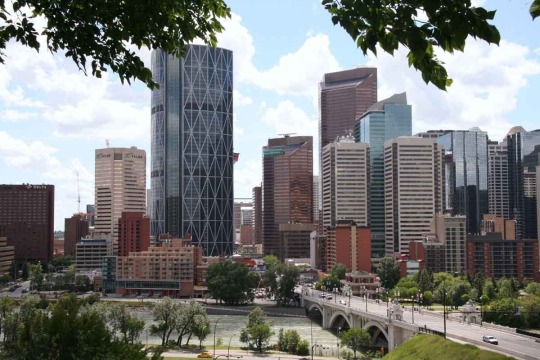
4. Calgary, Alberta
The city of Calgary is known as the sunniest city in Canada. Well, it’s not overrated in any way, since the city’s warm wind, the chinook, can become 15 degrees centigrade in just a few hours! The city has, of course, a continental weather, while the lifestyle is cosmopolitan. Calgary has a population of 1,239,220, and plays host to the largest outdoor event in the world: Calgary Stampede.
The Economist named the city of Calgary as one of the world’s most livable cities. Calgary has the highest GDP in Canada each year. It also provides its residents with the best quality of life. These qualities all serve to make the city the Wild Rose Country’s prized jewel.
The city of Calgary certainly has the feel of a big city, while also retaining the classic small town charm. Here, you can easily enjoy the nightlife, street festivals, and other outdoor activities. Calgary features a lifestyle where you can enjoy working hard (which you have surely done for decades), while playing harder.

5. Clarington, Ontario
You can find the municipality of Clarington just outside the Greater Toronto Area, and on Lake Ontario’s pristine shores. This municipality offers one of the most wonderful communities you can find in all of Canada. Here, you can enjoy the life of living in the city, while within reach of escaping to relax in the country. Even as a retiree, Clarington will let you have a place to work, do your business, be able to play, or simply stay active.
The community of Clarington has humid continental weather, and has a population of 92,013. Here, you’ll be able to enjoy a slow lifestyle, or a fast-paced day-to-day living, the choice is all yours. You’ll be able to walk the parks, hike the trails, or swim on the beaches! Not to mention, the home of summer concerts, Canadian Tire Motorsport Park, can also be found here.
Clarington is within reach of Toronto, making it desirable in many ways. The prices of real estate are reasonable. However, you have to be quick, since the market is quickly and steadily appreciating. It’s no wonder, since Clarington has a strong presence of commuting families, while also boasting a low crime rate.
Living The Life!
Who said that because you’re getting older, you have to live less? Well, whoever said that got it all wrong. As a retiree, you have all the time in your hands, so why not make the best of it? Choose the best place that you should have. Pick your new home, pack up your stuff, and make your move now. Soon you’ll be there, saying, “I’m here… and I’m living the life!”
#canadahouse, #realestateproperty, #propertyforsaleincanada, #canadahouseforsale, #canadahouseforrent, #canadahouseprice, #canadahouseandhome, #rentahousecanada, #canadahousecost, #canadahousedebt, #houseforsalecanada, #cheaphousesforsaleincanada, #homesforsaleincanada, #canadaapartmentforsale, #propertyforsaletoronto, #tinyforsalecanada, #luxuryhomesforsaletoronto, #canadapropertyprices, #historichousesincanada, #iconichousesincanada, #mostexpensivehousesincanada, #cheappropertiesforsaleincanada
https://www.greaterpropertygroup.com/gpg-blog/The-5-Best-Places-To-Retire-In-Canada
https://www.greaterpropertygroup.com/
#Canada house#real estate property#property for sale in Canada#property for sale Toronto#Canada house for sale#Canada house for rent#Canada house price#rent a house Canada#Canada house cost#Canada house debt#house for sale Canada#tiny house for sale Canada#Canada apartment for sale#Canada property prices#historic houses in Canada#iconic houses in Canada#most expensive houses in Canada#cheap properties for sale in Canada
0 notes
Text
The Biggest Real Estate Property For Sale In Canada Now

A Safe Haven
In 1954, Anthony Markus wanted to escape the Communist regime of his country. And he planned to do so, together with his two friends. One night, he hid near the border of Hungary and Austria, waiting for his friends to arrive. Unfortunately, however, his friends never showed up. The young escapee at last decided to set on his own, crossing obstacles just to taste freedom from living behind the clutches of the Iron Curtain. He ran until he stumbled upon an Austrian vineyard. Lucky for him, the farmer gave him a place to stay, and the means to earn a living.
Markus's life was not easy, even after escaping the regime. Today, however, he now finds himself as the owner of one of the largest farms in the north. Markus is able to enjoy plowing the 14,000 acre fields, and taking care of more or less 1,000 cattle!
After Markus left Hungary, he travelled until he found his way to Canada, where he first worked in The Pas's bush south, and then went to work as a baker in Regina. Markus brought with him Margaretta, a woman he had met in Austria. And later on, the two would marry.
After Markus was laid off at the bakery, he began thinking of farming instead. His father was a farmer before the Communist regime, and he had even worked as a farmer himself. So, he and his wife pooled their savings, and went back to Manitoba. With the money he had, he bought a 400 acre piece of land there. Eventually, through hard work and dedication, he built it into what it is today.
The place sure is far from where Markus grew up, but it's a safe haven for him and his family. You can enjoy doing that too - if you have $53.3 million lying around, of course.
The Land
The property is made up of three farms, being sold as one. Markus is tending to the biggest chunk of the property. All of these farms are equivalent to 24,000 acres, and this is said to be the biggest piece of real estate on the market.
If you want to know how big the property is, well, just imagine the City of Vancouver. Then picture the whole city to be slightly smaller, and resembling a flat piece of paper. All the buildings are replaced by a flat expanse, spreading outward in all directions from the center. That's how big the property is.
According to Markus,“It’s flat like a pancake; you can farm corner to corner… We don’t have rats, we don’t have gophers, we don’t have molehills.”
Markus farms grain and cattle on his main farm, while the two adjacent farms are for wheat, oats, and canola.

The Sale
Darren Sander, a Saskatoon-based realtor, is the one overseeing the sale.
He said, “One of the things about selling farms that is probably different than other real estate is that, when a farmer hires us to come to the door, they’re hiring you to sell their life’s work… With a farmer, farming isn’t just what they do. It’s who they are.”
Sanders was the one who thought of grouping the three farms together. He explained, “To make it of such a size that we could draw someone from a long distance to buy this property.”
Luckily for Sanders, Markus's neighbours were also up to the idea. The sale of the three farms is not exclusive, which means that anyone who is interested in purchasing only one of the three is still welcome to do so. However, Sanders has also said that people who have reached out to them so far are interested in the packaged sale.
Anyone looking to purchase the property would really be getting everything that they see in it.
Sanders said it “Includes all buildings, homes, bins and all infrastructure. The equipment and cattle is also included.”
Unfortunately, most potential buyers for these types of properties are farmers. However, Sanders is still positive that the property will be sold soon. He said that the value for the money is what will draw buyers in.
Even though the prices in the area have risen, they are still quite low, when compared to the prices in Ontario, Quebec and British Columbia.
Sanders said, “It’s the most economically-priced, cultivated land that I am aware of in Canada… And it’s great land, great soil.”
The only drawback of the property is its location.
The Farming Sector
It's true that the farming sector get less attention, when compared to the residential and commercial real estate. It might not be surprising for you to hear that many pastures and fields that are for sale don't get too many buyers.
According to a study done by Statistics Canada, most farmers nowadays are at an age where they're close to retiring. And we may soon be seeing large numbers of agricultural buildings and farmlands changing hands. The amount of money that comes with these numbers (estimated to be no less than $420 billion in 2016) is quite high, as well.
In recent years, the real estate market has seen an upward price trajectory, especially in the housing sector. However, this does not mean that the farming sector is getting left behind. According to a Crown corporation which aids farmers by lending them money, Farm Credit Canada, the farmland annual price gain is 8% since 2000. There are even times when the annual price gain will reach up to 25%.
According to the chief agricultural economist of Farm Credit Canada, J.P Gervais, the primary reason of farmlands' escalating prices is the rise of farm incomes. He pointed out that, "That can be explained by one thing — demand for food… We’ve seen a slowdown in the world economy, but in terms of food demand, the fundamentals remain very positive.”
After the financial crisis of the late 2000s, the farming sector became an asset of its own. And since "everyone has to eat", investors quickly found themselves running away from the stock market and diving headfirst into the farming sector.
The Plan
Markus plans to take a break from farming, if the property is sold. He wants to fly more, and maybe even build and ride a motorcycle. Markus would also like to visit his sister, who owns a vineyard in France.
Markus would still continue to farm - maybe not on his property, but on his neighbors'. He said, “I might be selling my farm, but I really enjoy running farm equipment… I just don’t want to be doing it 24/7.”
#canadahouse, #realestateproperty, #propertyforsaleincanada, #canadahouseforsale, #canadahouseforrent, #canadahouseprice, #canadahouseandhome, #rentahousecanada, #canadahousecost, #canadahousedebt, #houseforsalecanada, #cheaphousesforsaleincanada, #homesforsaleincanada, #canadaapartmentforsale, #propertyforsaletoronto, #tinyforsalecanada, #luxuryhomesforsaletoronto, #canadapropertyprices, #historichousesincanada, #iconichousesincanada, #mostexpensivehousesincanada, #cheappropertiesforsaleincanada
https://www.greaterpropertygroup.com/gpg-blog/The-Biggest-Real-Estate-Property-For-Sale-In-Canada-Now
https://www.greaterpropertygroup.com/
#Canada house#real estate property#property for sale in Canada#Canada house for sale#Canada house for rent#Canada house price#rent a house Canada#Canada house cost#Canada house debt#house for sale Canada#cheap houses for sale in Canada#homes for sale in Canada#Canada apartment for sale#property for sale Toronto#tiny house for sale Canada#luxury homes for sale Toronto#Canada property prices#historic houses in Canada#iconic houses in Canada#most expensive houses in Canada#cheap properties for sale in Canada
1 note
·
View note